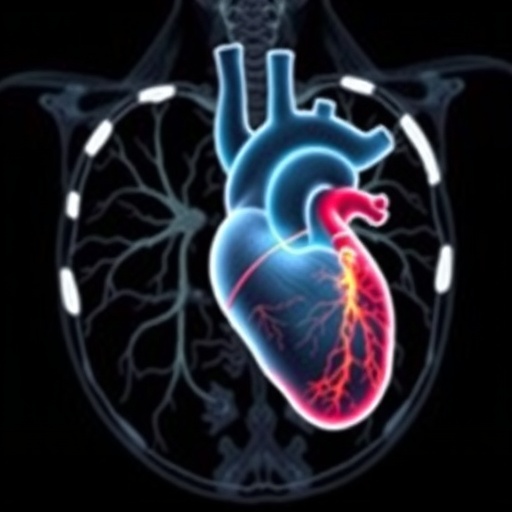A groundbreaking investigation conducted by heart researchers at Intermountain Health in Salt Lake City reveals that routine coronary artery calcium (CAC) computed tomography (CT) scans, long employed as a predictive tool for cardiovascular risk, can also detect a spectrum of other critical medical abnormalities. This pivotal clinical trial underscores an emergent utility of CAC scans beyond their conventional focus, potentially reshaping preventive cardiac and general health diagnostics.
CAC CT scans quantify calcified plaque accumulation within coronary arteries, serving as a minimally invasive biomarker to stratify patients’ risk of developing heart disease or myocardial infarction. Elevated coronary calcium scores typically prompt clinicians to initiate interventions such as lifestyle modification or statin therapy aimed at curtailing atherosclerotic progression. However, the Intermountain CorCal randomized controlled trial has unearthed an unexpected breadth of incidental findings that bear significant clinical implications.
Involving 2,284 asymptomatic and ostensibly healthy participants, this rigorous clinical trial randomly assigned individuals to undergo either standard care or CAC CT scanning to assess subclinical atherosclerosis. Radiological interpretation of the cardiac CT images revealed that approximately 8.5 percent of the scanned cohort exhibited non-cardiac abnormalities warranting further medical evaluation. These incidental findings spanned various organ systems encompassed within the thoracic imaging field, redefining the scope of CAC CT utility from exclusively cardiovascular risk assessment to a broader health surveillance modality.
Remarkably, over half of these incidental findings involved pulmonary abnormalities, highlighting the lungs as a frequent site of subclinical disease incidentally detected during cardiac imaging. Beyond pulmonary pathology, clinicians identified anomalies in the esophagus, liver, kidneys, breasts, skeletal structures, and even cardiac tissues not directly related to calcified coronary plaques. This comprehensive detection capability introduces a paradigm shift, suggesting that cardiac CT scans offer a multifaceted diagnostic lens extending into thoracic and upper abdominal health.
One of the more urgent and life-saving discoveries involved the identification of thoracic aortic aneurysms (TAAs) in 23 patients. TAAs represent pathological dilatations of the aorta within the chest cavity that, if untreated, carry a dire risk of rupture. In this cohort, aneurysm sizes exceeded 4.5 centimeters—a critical threshold for intervention—with one patient presenting an emergency-level diameter of eight centimeters. The prompt recognition of this potentially fatal condition led to expedited surgical management within a week, underscoring the transformative impact of incidental findings on patient outcomes.
Dr. Brent Muhlestein, co-director of research at Intermountain Medical Center, emphasizes the potential broader preventive benefits of CAC CT scans, stating that these diagnostic insights may have a life-saving ripple effect well beyond primary cardiac risk stratification. He advocates for expanding the investigative role of radiologists interpreting these scans to encompass vigilance for non-cardiac pathologies.
The trial’s novel findings provoke essential questions about health economics and clinical workflow efficiencies: Should radiologists allocate additional time and resources to scrutinize scans more comprehensively? Is the expanded diagnostic yield sufficient to justify the increased follow-up investigations and potential patient anxiety? These are critical queries as the healthcare community evaluates the integration of such multipurpose imaging protocols within standard preventive care.
Coronary artery calcium scoring itself has evolved as a cornerstone in precision cardiology, providing tangible, quantitative data reflective of atherosclerotic plaque burden. The Intermountain CorCal study previously affirmed CAC scanning’s role in identifying candidates who might benefit from lipid-lowering therapy, demonstrating a tailored approach to cardiovascular prevention. The current research chapter introduces an ancillary, yet possibly paramount, opportunity for broader diagnostic vigilance.
Capturing incidental, yet medically significant, anatomical abnormalities during CAC scanning may enable earlier detection of pathologies that traditionally require separate dedicated imaging studies—thereby streamlining diagnostics and potentially improving survival rates. The multidisciplinary scope of findings spans pulmonology, oncology, nephrology, and vascular surgery, among others, illustrating the integrative potential of cardiac imaging.
While the study does not yet definitively conclude the necessity of every recommended follow-up, the sheer percentage of patients harboring unsuspected conditions invites further evaluation of the cost-benefit balance. Longitudinal assessments will be paramount in delineating which incidental findings confer true clinical benefit from early intervention versus those that may contribute to overdiagnosis.
At the American Heart Association Scientific Sessions 2025 in New Orleans, these findings sparked lively discourse around the evolving clinical paradigm for CAC CT scans. Researchers and clinicians alike are considering how novel data streams from cardiac imaging can be harnessed to elevate patient care standards through early detection and timely treatment of incidental but consequential diseases.
This research portends a significant shift in the narrative surrounding preventive cardiac imaging—from a narrowly focused cardiac risk stratification tool to a broader, proactive health assessment instrument. As cardiology intertwines with radiology and general medicine, CAC CT scans may emerge as vital nodes in a comprehensive, integrative approach to patient health surveillance.
Future investigations are anticipated to further elucidate the downstream impacts of expanded radiologic analysis, refining guidelines that balance diagnostic comprehensiveness with clinical prudence and healthcare resource stewardship. Meanwhile, the Intermountain study’s revelations offer a promising glimpse into the next frontier of preventive medicine, where imaging technologies serve as multipurpose gateways to earlier, and potentially life-saving, medical interventions.
Subject of Research: People
Article Title: Not provided
News Publication Date: Not provided
Web References: Not provided
References: Not provided
Image Credits: Intermountain Health
Keywords: Coronary artery disease, Medical imaging
Tags: atherosclerosis detection methodscardiovascular risk assessmentcoronary artery calcium CT scanshealth implications of CAC scoresheart disease prevention strategiesincidental findings in CT imagingIntermountain CorCal clinical trialMinimally invasive coronary calcium scansnon-cardiac health abnormalitiespreventive cardiac diagnosticssubclinical atherosclerosis detectionthoracic imaging abnormalities




